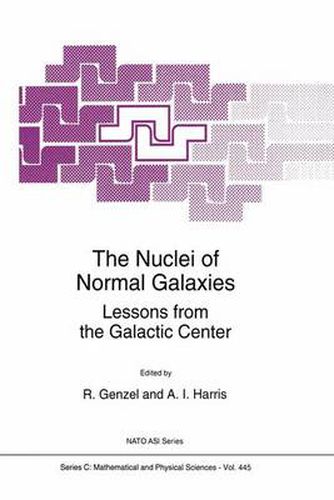Readings Newsletter
Become a Readings Member to make your shopping experience even easier.
Sign in or sign up for free!
You’re not far away from qualifying for FREE standard shipping within Australia
You’ve qualified for FREE standard shipping within Australia
The cart is loading…






This title is printed to order. This book may have been self-published. If so, we cannot guarantee the quality of the content. In the main most books will have gone through the editing process however some may not. We therefore suggest that you be aware of this before ordering this book. If in doubt check either the author or publisher’s details as we are unable to accept any returns unless they are faulty. Please contact us if you have any questions.
Our Galactic center’s proximity allows astronomers to study physical pro cesses within galactic nuclei at a level of detail that will never be possible in the more distant, but usually also more spectacular, extragalactic systems. Recent advances in instrumentation from the radio, through the submillime ter and infrared wavebands, and out to the X- and ‘(-ray bands now allow observations of the Galactic Center over thirteen orders of magnitude in wave length. Our knowledge about the central few hundred parsecs of our Galaxy has consequently increased vastly over the past decade. The same new instru ments provide high resolution, high quality measurements of nearby “normal” galactic nuclei; that is, nuclei whose modest energy output is comparable to that of our own (and most other) galaxies. Theorists, spurred in part by the new observations, have been able to refine models of the energetics, dynam ics, and evolution of the gas and stellar systems deep within galactic nuclei.
$9.00 standard shipping within Australia
FREE standard shipping within Australia for orders over $100.00
Express & International shipping calculated at checkout
This title is printed to order. This book may have been self-published. If so, we cannot guarantee the quality of the content. In the main most books will have gone through the editing process however some may not. We therefore suggest that you be aware of this before ordering this book. If in doubt check either the author or publisher’s details as we are unable to accept any returns unless they are faulty. Please contact us if you have any questions.
Our Galactic center’s proximity allows astronomers to study physical pro cesses within galactic nuclei at a level of detail that will never be possible in the more distant, but usually also more spectacular, extragalactic systems. Recent advances in instrumentation from the radio, through the submillime ter and infrared wavebands, and out to the X- and ‘(-ray bands now allow observations of the Galactic Center over thirteen orders of magnitude in wave length. Our knowledge about the central few hundred parsecs of our Galaxy has consequently increased vastly over the past decade. The same new instru ments provide high resolution, high quality measurements of nearby “normal” galactic nuclei; that is, nuclei whose modest energy output is comparable to that of our own (and most other) galaxies. Theorists, spurred in part by the new observations, have been able to refine models of the energetics, dynam ics, and evolution of the gas and stellar systems deep within galactic nuclei.